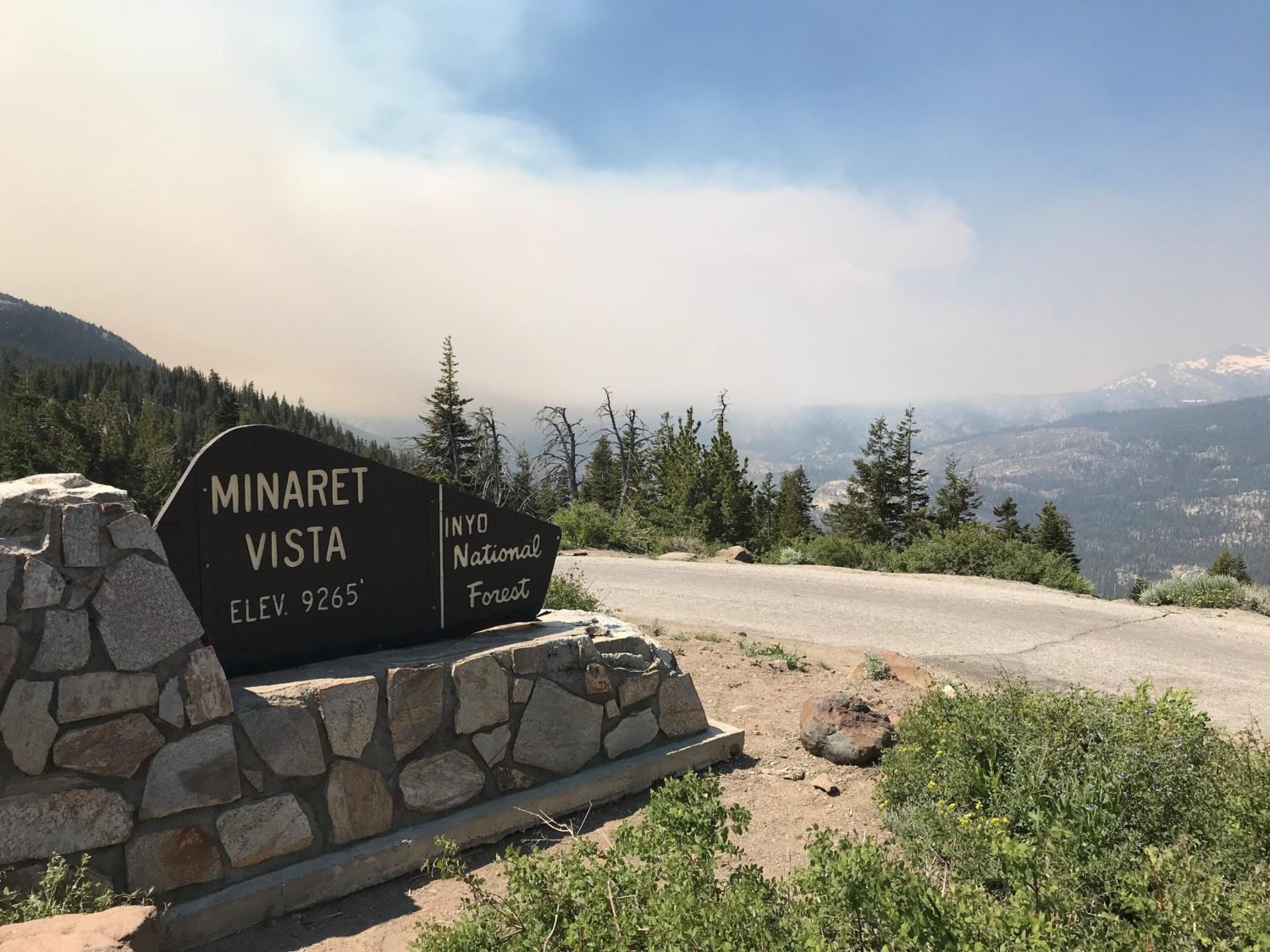
The Lions Point fire started on the Sierra National Forest around June 1st as a lightning strike and is burning near the Lion Point area in the Ansel Adams Wilderness. It crossed onto the Inyo National Forest on June 22 and is now being co-managed by both the Sierra and the Inyo National Forests, according to Inciweb.
Due to strong winds the evening of June 23 of 20-30 mph, the fire spread to the south and west and is now about 1000 acres, 7 miles southwest of Mammoth Lakes.

The fire is burning at 6000-8000’ elevation in red fir with some growth to the southeast. Large areas of standing dead and down timber are within and surrounding the burning area. There is no present threat to structures or public safety.
Lion Point fire is in a bad location for Mammoth smoke wise, this could be like the Aspen Fire and Rainbow Fires. We get clear mornings and then smoke moves in later in the day and then dissipates over night.
That shot from Lake George was at 8:30 am and then I drove up to the vista to see the fire. By noon the lakes basin had light smoke with ash falling. Here in town the smoke came in about 1 pm with the added ash falling. Sun outside is red in the sky.
We expect this to be around for the next couple week’s. So far nothing really bad but people sensitive to the smoke are not happy. All part of the new forest service plan to let these fire burn off the overgrowth. Happy Summer pray for SNOW!
The fire will be managed for multiple resource and protection objectives including suppression, air quality, firefighter safety and hazardous vegetation reduction. Because the fire is burning in designated wilderness, fire officials will be using MIST (Minimum Impact Suppression Tactics), such as using natural barriers for containment lines and minimizing mechanical disturbance with chainsaws or aircraft.

To maximize daylight work time, crews are camping near the fire and consist of four Type I hotshot crews and a Wildland Fire Module. The communities near the fire can expect smoke impacts in varying degrees for the next two to three weeks. Air quality and smoke forecasts will be available as the incident progresses.

For more information, see Lions Fire https://inciweb.nwcg.gov/incident/news/5850/ or 760-582-5203.




